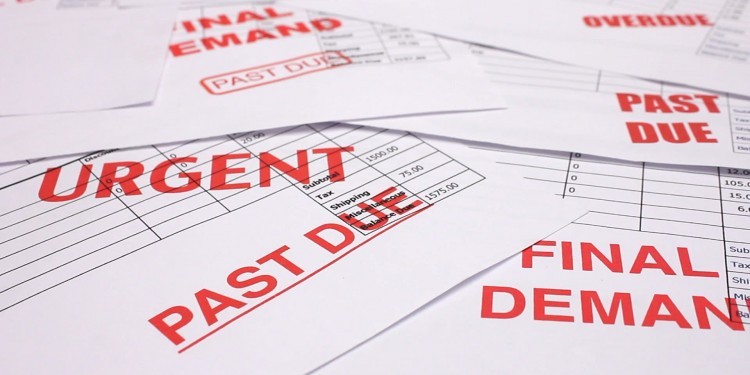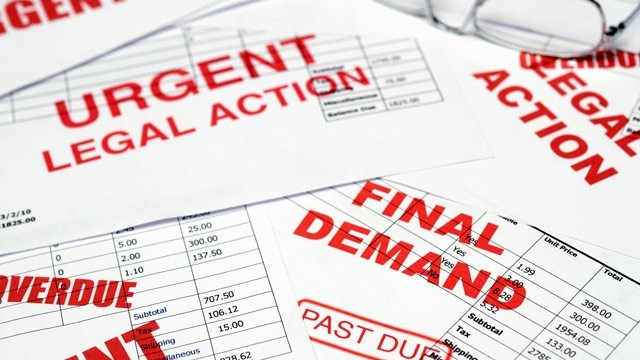What is a Secured Debt Debt Bankruptcy Information
Post on: 5 Июнь, 2015 No Comment

Learn about secured debts and how creditors can collect them.
In Chapter 7 and Chapter 13 bankruptcy, whether a debt is secured or unsecured makes a big difference in how that debt is treated. For this reason, it’s essential that you understand which of your debts are secured and which aren’t. Whether a debt is secured or not also determines how a creditor can collect that debt. So even if you’re not filing for bankruptcy. learning the distinction between the two is important.
(To learn about unsecured debts, see What Is an Unsecured Debt? )
The Definition of a Secured Debt
A secured debt is:
- an obligation that you owe, and
- backed by collateral that a creditor can recover if you default.
Secured debts (or liens) can be voluntary or involuntary. Home mortgages and car loans are examples of secured debts that you incur voluntarily. Real property taxes, by contrast, are involuntary liens.
Voluntary Liens
Usually, security interests are granted by agreement. As a condition for making a home loan, for example, lenders typically require that you sign a mortgage (or in some states, a deed of trust). A mortgage or deed of trust is an agreement that grants a lender a security interest, or lien, against real property.
You also can grant a lender a lien against personal property. Personal property is anything that you own or in which you have an interest other than real property. Personal property includes vehicles, equipment, furniture, tools, inventory, shares of stock, and other types of investment interests – even cash.
Typically, the way you grant a lien against personal property is through a security agreement. Before extending a new car loan, for example, a lender will require you to sign a security agreement that grants it a lien against the vehicle that you are buying.
Involuntary Liens
Involuntary liens are security interests imposed against your property by operation of law. No agreement is involved. Involuntary liens can be imposed by state or federal statute or through a court order. Involuntary liens include:
- real property taxes
- liens for delinquent income taxes
- mechanic’s liens
- in some states. landlord liens, and
- judgment liens.

How Liens Are Perfected
One of the steps that a secured creditor must take to protect its position is to perfect its lien. Perfection is a legal term that refers to the action required to give other creditors and interested parties notice of a lien or security interest.
The action required to perfect a lien depends on the type of property and applicable state law. For example:
Real property. In most states, the lender perfects its lien by recording (filing) mortgages and deeds of trusts in the county where the property is located.
Vehicles. Lenders usually can perfect liens against cars, motorcycles, and trucks by a filing with the state motor vehicle department and a notation on the certificate of title.
Tangible personal property. Security interests in most tangible personal property – like equipment, furniture, tools, goods and materials – are perfected by filing financing statements. A financing statement is a document that identifies the borrower, lender, and collateral for a secured debt. Unlike security agreements, financing statements do not have to signed to be effective. A creditor can file a financing statement as long as you have signed the security agreement for the collateral that it is supposed to cover. In most states, financing statements are filed with the secretary of state.
Perfecting a lien is a critical step for any creditor. In some cases, borrowers grant liens against the same property (like your home) to multiple creditors. Take, for example, a home equity line of credit, which is usually junior to the mortgage that you took out to buy your house. A junior lien, like a home equity line of credit, can, in effect, move up in priority if the holder of the first mortgage fails to perfect its interest.
In bankruptcy, the consequences of a lender’s failure to perfect a lien can be even more serious. If you file bankruptcy, the court has the power to set aside a lien that has not been properly perfected. A lien that is set aside is treated as if it never existed in the first place — meaning that the lender becomes an unsecured creditor. (To learn what happens to unsecured debt in Chapter 7 and 13 bankruptcy, see our areas on What Happens to Your Debt & Property in Chapter 7 and Your Debts in Chapter 13 Bankruptcy .)
How a Creditor Can Collect a Secured Debt
One of the big differences between an unsecured debt and a secured debt is how the creditor can enforce its rights if you fail to make payments. For most unsecured debts, creditors must first sue you in court before they can take any of your property. A secured creditor, however, can move to enforce is rights if you default on your loan obligations and have not filed bankruptcy. Remedies to enforce secured debts include:
Repossession. Secured creditors may not trespass on private property or breach the peace, but they usually do not have to go to court before repossessing cars or other motor vehicles.
Foreclosure. A lender may enforce a home loan by foreclosing its mortgage or deed of trust. In some states, foreclosure does not require any court action and may be completed within a matter of a few months. In other states, where court approval is needed, foreclosure typically takes much longer.
Lenders also can foreclose liens against personal property, in most cases without a lawsuit.
Court action. A secured creditor has the additional option of filing a court action to obtain a judgment against you. Depending on applicable state law, a creditor may seek a judgment for the entire obligation that you owe, or the balance left after deducting the value of any collateral that it recovers.














